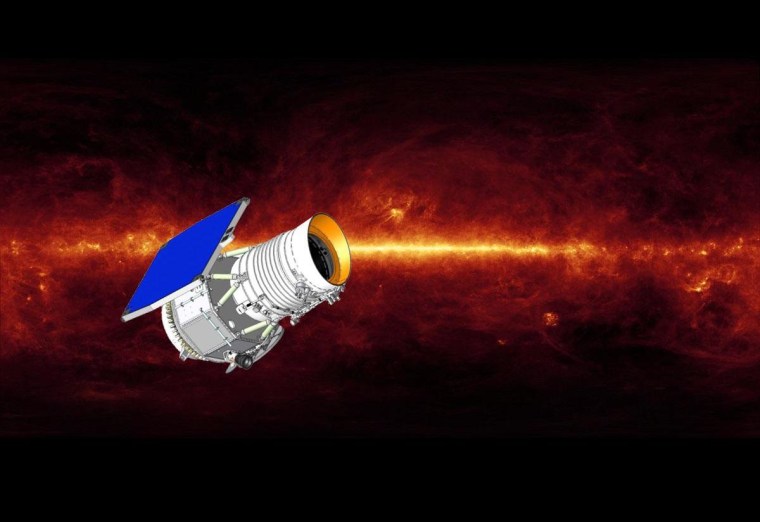NASA's sky-mapping spacecraft has embarked on a new phase in its mission after running out of coolant designed to chill its heat-sensitive instruments.
The space agency said Monday that two of the telescope's infrared detectors can still function at warmer temperatures and will continue to search for near-Earth asteroids and comets.
Since launching in 2009, the Wide-field Infrared Survey Explorer, or WISE, has completed its primary mission to map the entire sky.
WISE has discovered more than 33,500 new asteroids, 19 comets and numerous brown dwarfs.
The extended survey is expected to last one to four months, depending on how the early results turn out. It will be known as NEOWISE, an acronym that blends "near-Earth objects" with the spacecraft's name.
The detectors' temperatures are warm only in a relative sense. They're still chilled to 334 degrees below zero Fahrenheit (-200 degrees Celsius). The detectors need to be that cold to register the faint heat from their faraway targets.
In addition to asteroids and comets, WISE will continue looking for brown dwarfs, celestial objects that are considered too big to be planets but too small to light up like a normal star. WISE's extended survey should give astronomers the opportunity to pick out the brown dwarfs closest to our own sun.
"We're working on figuring out just how far away the brown dwarfs are, and how luminous the galaxies are," WISE principal investigator Ned Wright, an astronomer at the University of California at Los Angeles, said in a mission update.
The WISE science team now is analyzing millions of objects captured in the images, including many that have never seen before. A first batch of WISE data, covering more than half the sky, will be released to the astronomical community next spring, with the rest to follow in 2012.
“The science data collected by WISE will be used by the scientific community for decades,” said Jaya Bajpayee, the WISE program executive at NASA Headquarters in Washington. “It will also provide a sky map for future observatories like NASA’s James Webb Space Telescope.”
This report includes information from The Associated Press and msnbc.com.
